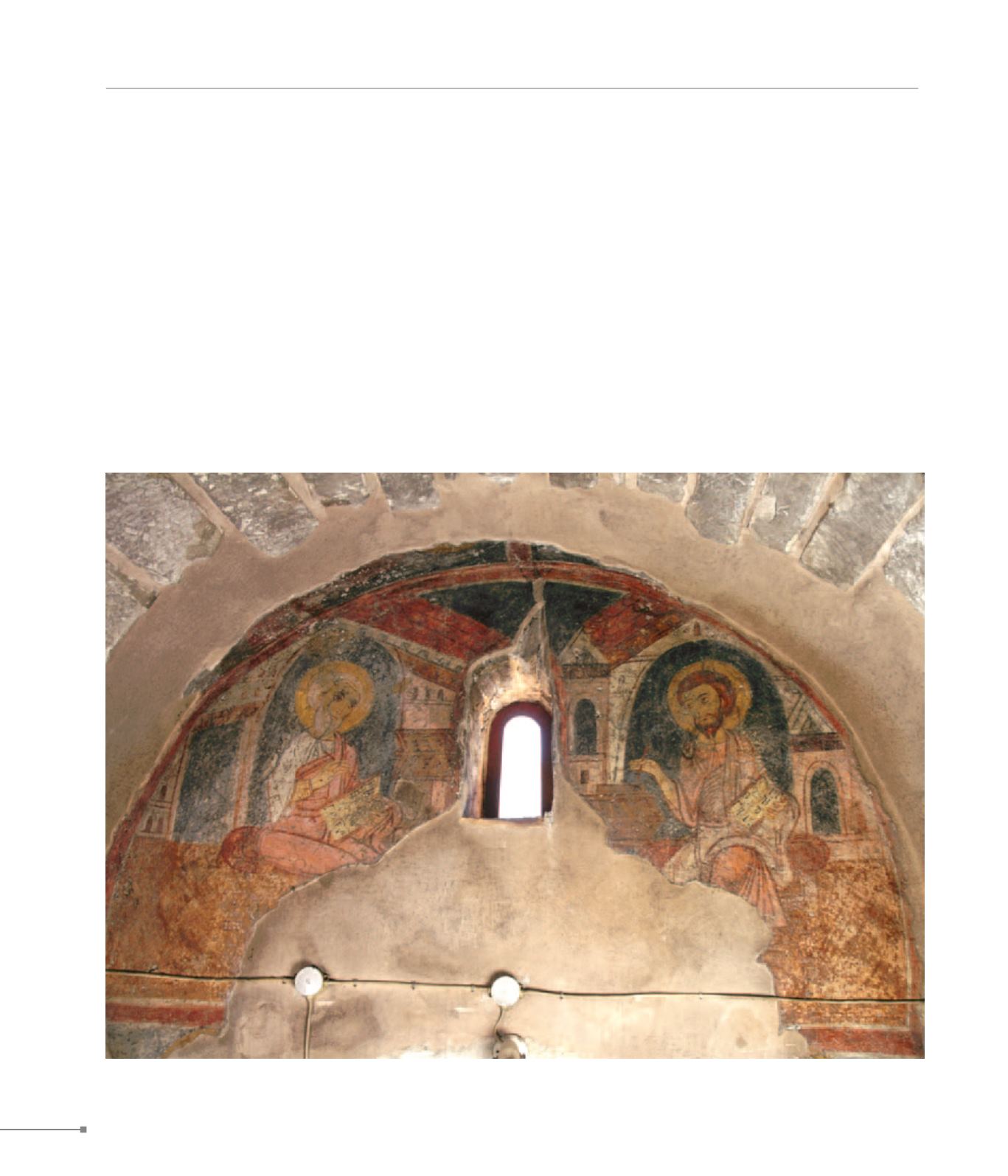
Myriokephala.
Myriokephala.
CRETE
256
391. Myriokephala, Panagia Antiphonetria, wall paintings of the first layer (Μυριοκέφαλα, Παναγία Αντιφωνήτρια, τοιχογραφίες α’ στρώματος)
have been completed with common masonry. Two layers of
wall-paintings have been revealed, the later layer dating from
the early 13th c. and following the Late Comnenian tradition,
while the decoration of the apse and side walls display the
pictorial tendencies of the artist. The church of Saint Nicholas,
at a rural location, was frescoed by two painters of the first
half of the 14th c., one associated with Michael Veneris’ tradi-
tion and the other reproducing works of Palaeologan art in a
folkloric manner. Within Argyroupolis, at the Bariotsiana site,
the church of Panagia is of particular interest, with its opulent
Late Gothic decoration dated to the 15th c., along with the
remnants of wall-paintings surviving in the barrel-vault of the
bema.
391.
Myriokephala.
In the centre of Myriokephala is Panagia Antiphonetria, a cru-
ciform church with dome and subsequent narthex, catholicon
of a small monastery whose structures were reconstructed in
the 18th and 19th c. According to reliable information included
in the will of Ioannis Xenos (the Hermit), who was the founder,
this monastery was built circa 1020 and was his focus of activ-
ity. There are three layers of wall-paintings, with the original
dating from circa 1020, and the second from the early 13th
c. The blind arcades in the narthex feature frescoes depicting
the Assumption of the Virgin Mary and the Deesis, works of
the 14th c.


